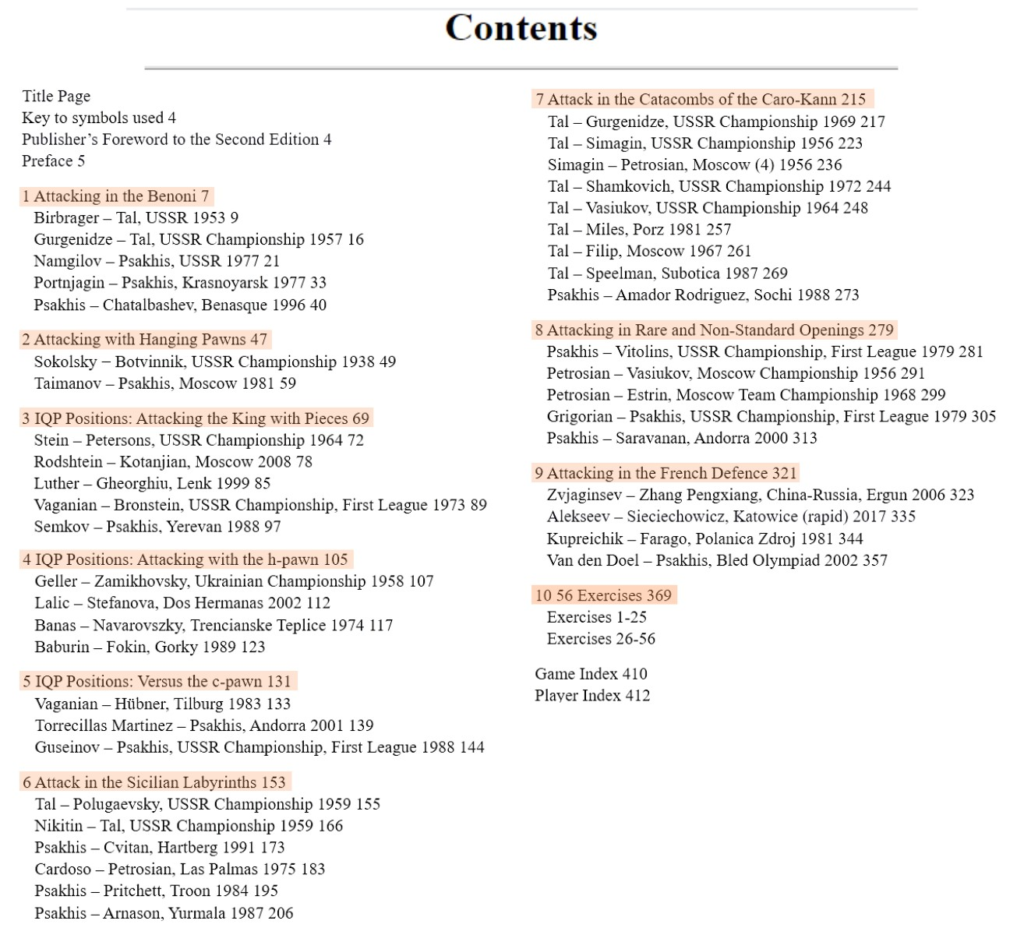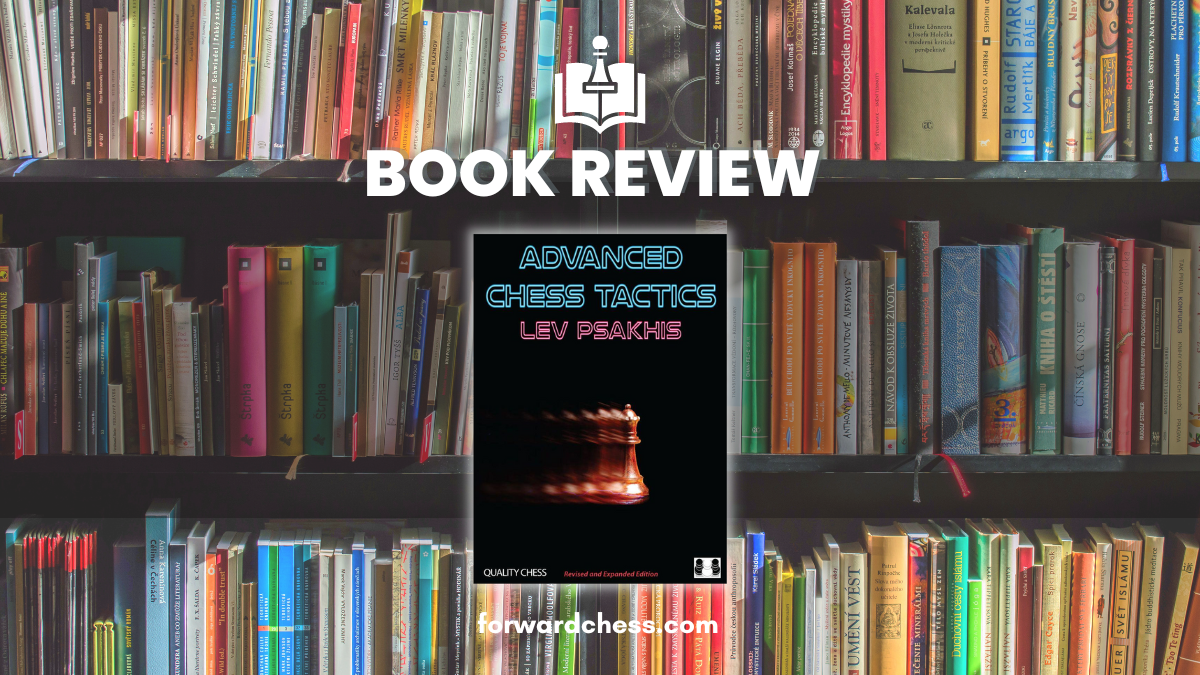Review of Advanced Chess Tactics, 2nd edition
“Long variation, wrong variation”
– Bent Larsen, as quoted by the author in this book.
Despite its title, this is not your average tactics book with lots of exercises where you must find the winning move. Instead, “Advanced Chess Tactics, 2nd edition” is essentially a collection of annotated games, and these games are grouped around various themes as shown in the table of contents below.

The games emphasize attacking tactical themes, and this explains the book’s title. The two major themes covered are attacking in specific openings and attacking in positions with particular pawn structures. The second edition includes an additional chapter on the French Defense, which is of course a favourite opening of the author, GM Lev Psakhis, and he has written several books on this opening.

The book is aimed at players with an Elo rating of 2000 – 2600, although the author says that lower-rated players can also benefit from the book. In terms of practical advice, one of the author’s recommendations is as follows:
“Don’t go out of your way to calculate long variations. A capacity for precise calculation to a depth of 2 – 4 moves is usually quite enough.”
This is consistent with Larsen’s view quoted above. However, many of the variations in the book are quite lengthy, and the accurate calculation of such variations in a game would be well beyond the capabilities of amateur club players. Despite this, the annotations are accessible to these players as study material, since they could skip the lengthy variations on a first pass through a game, and then revisit the variations in subsequent passes.
Psakhis also emphasizes the role of intuition during a game and says after a particular piece of lengthy analysis:
“These variations are beautiful and difficult. Working them out completely at the board is not of course possible, but with the help of intuition we can at least head along the right track.”
Each chapter starts off with questions for the reader to solve or at least think about, and these questions refer to the games in the chapter. The questions are generally tactical, but not usually of the “find the winning move” variety. For example, one of the questions simply asks, “How to react?” in the given position. The solutions to the questions are found in appropriate games in the chapter. Fifty-six additional exercises are included at the end of the book, and again many of the solutions are quite lengthy.
Psakhis writes in an engaging style, and the excellent verbal commentary complements the detailed variations. In addition, he is not afraid to point out his mistakes where appropriate. He also offers some background to the games, including information on the players. In his own games, he notes what he saw and analyzed during the games and how he felt at various stages of the games. The book also includes some photos from the author’s collection. These personal touches greatly enhance the book and make reading it a more pleasant experience.
Two examples from the book are given below, with annotations from the book.
Advanced Chess Tactics: Example 1
Advanced Chess Tactics: Example 2
In summary, this is a very different tactics book. While it is mostly aimed at strong players, lower-rated players can also benefit from it. The author’s enthusiasm for the material shines through, and his vast playing and coaching experience has helped him to write an excellent book that will repay detailed study.
Have any thoughts or questions? Let us know in the comments!
- 1000 Published books on Forward Chess - November 15, 2024
- Book Review: A Guide To Chess Improvement - September 9, 2024
- Review: Chess Coach by Vladimir Barsky - August 26, 2024
